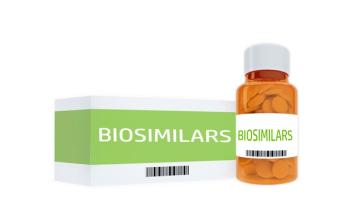
- Pharmaceutical Executive: June 2025
- Volume 45
- Issue 5
Earned Media and PBMs: Proactive Pathways for Image Boost
Insights on ways pharmacy benefit managers can tap earned media to enhance their reputation—and demonstrate value through transparency, storytelling, and leveraging data to improve patient care.
Drawing from much real-world attention on these sectors at the moment, Laura Joszt, Vice President of Content at MJH Life Sciences, shares advice for pharmacy benefit managers (PBMs) and pharmacists on leveraging opportunities from earned media coverage. Joszt oversees the managed care and pharmacy brands at MJH.
Pharm Exec: It’s never easy to shift public perception, but how can PBMs, in their dealings with media outlets, take advantage of earned media to help repair their image or more clearly articulate the important role they feel they play in the care ecosystem?
Joszt: In these opportunities, PBMs should focus on transparency, demonstrating value, and highlighting patient-centric initiatives. Through proactive storytelling on cost savings and patient access, PBMs can showcase those tangible examples of how they can drive down prescription drug costs for employers, health plans, and ultimately, patients. Some examples would be successes with negotiation that have led to significant discounts on high-cost drugs and how formulary design can ensure access to effective medicines while also controlling spending.
Typically, PBMs are viewed as entities that are solely trying to control costs and make money, but they can emphasize clinical contributions, such as the role of their pharmacists in medication therapy management, adherence programs, and drug utilization reviews to improve patient outcomes and safety. PBMs can also explain how they identify and prevent wasteful spending on unnecessary or ineffective medications, which is something pharmacists have a crucial role in.
Pharm Exec: With potential policies seeking to regulate PBMs, and the larger scrutiny on drug costs and transparency, PBMs often provide little data when defending their positioning in the blame game. Are there untapped coverage opportunities for PBMs in leveraging data more effectively?
Joszt: The lack of transparent data definitely contributes to public skepticism of PBMs. There are indeed many untapped coverage opportunities for PBMs to leverage data. By partnering with employers or health plans, PBMs will be in a better position to share specific savings and detailing how strategies, such as making changes to formularies, converting to generic drugs, and reducing drug waste, directly impacts pharmacy spend. They can also do a better job of showing how their interventions can lead to lower costs or improved medication adherence and utilization for patients with chronic diseases or those patients on specialty medications.
Rebates and fees are often under the most scrutiny, and PBMs can proactively provide data on the percentage of rebates they pass through to clients and how that translates to savings. Importantly, while this is an area of potential legislation and some states are increasing mandating more transparency, PBMs should strive to go above and beyond those minimums or get ahead of what they’ll legally be required to do, which can help garner goodwill among healthcare stakeholders.
Pharm Exec: Could actually leaning into the criticism, as a way to seize some control of the narrative, perhaps help flip the script, particularly amid the emergence of alternative, independent PBMs?
Joszt: Absolutely, leaning into the criticism can be a powerful and effective strategy for traditional PBMs to seize control of the narrative, especially with the rise of alternative, independent PBMs, which often gain traction by pitting themselves against traditional PBMs and showing how they do business differently and more transparently.
While the approach may seem counterintuitive, it can help to flip the script, especially at a time when traditional PBMs are so often being demonized. Leaning into the criticism, acknowledging it, and addressing it will build credibility and trust, show that they are trying to move on from the past, and highlight that they are being proactive. As the front-line providers, pharmacists often experience patient frustration with PBMs and would be more likely to appreciate an honest discussion that is addressing the challenges patients face with PBMs.
Pharm Exec: Separately, on the pharmacy level, what are ways earned media can be a tool in the current push to grant pharmacists provider status?
Joszt: There is a movement in pharmacy for pharmacists to gain a provider status, which legally recognizes pharmacists as providers in the same way physicians are, enabling direct billing for patient care services. Pharmacists do much more than simply dispense medications these days, as they provide medication therapy management, chronic disease management, immunizations, point-of-care testing, and more. For many Americans, pharmacists are often the most accessible healthcare provider, and allowing them to be reimbursed for more will only improve patient access to care.
Earned media can further this goal by highlighting success stories and improved outcomes from patients who directly benefited from pharmacists providing services, delving into how the pharmacist fits into a multidisciplinary care team, and highlighting how pharmacist-led initiatives reduce overall healthcare costs while reducing medication errors and unnecessary hospitalization.
For years, Pharmacy Times has highlighted the value of the pharmacist to educate pharma and policymakers about the continually expanded role pharmacists play beyond dispensing medications.
Articles in this issue
7 months ago
Role Eye-Opener7 months ago
2025 Pharm Exec Top 50 Companies7 months ago
Jim Weiss: Molded in Mentorship7 months ago
Reinventing Pharma Sales Force EffectivenessNewsletter
Lead with insight with the Pharmaceutical Executive newsletter, featuring strategic analysis, leadership trends, and market intelligence for biopharma decision-makers.




